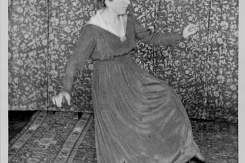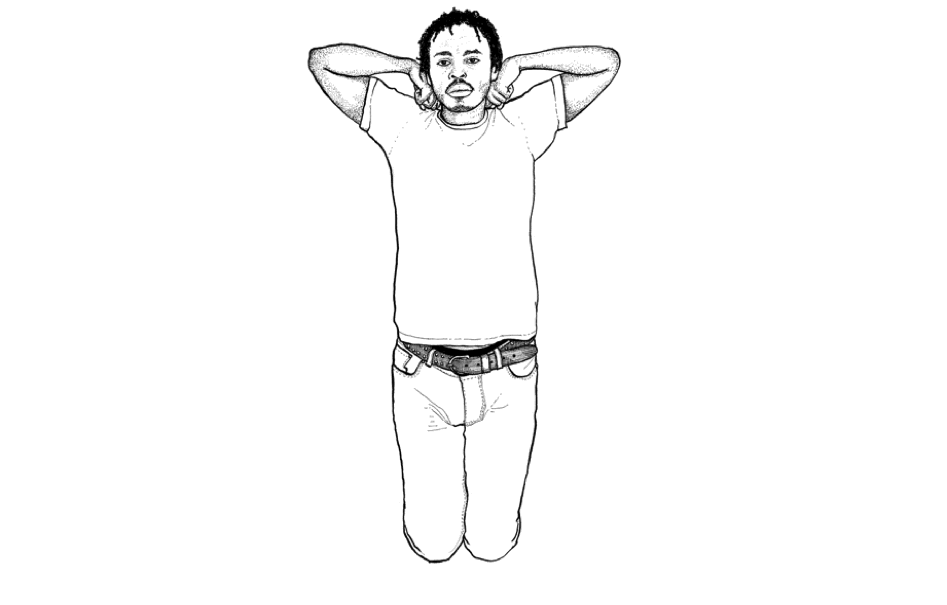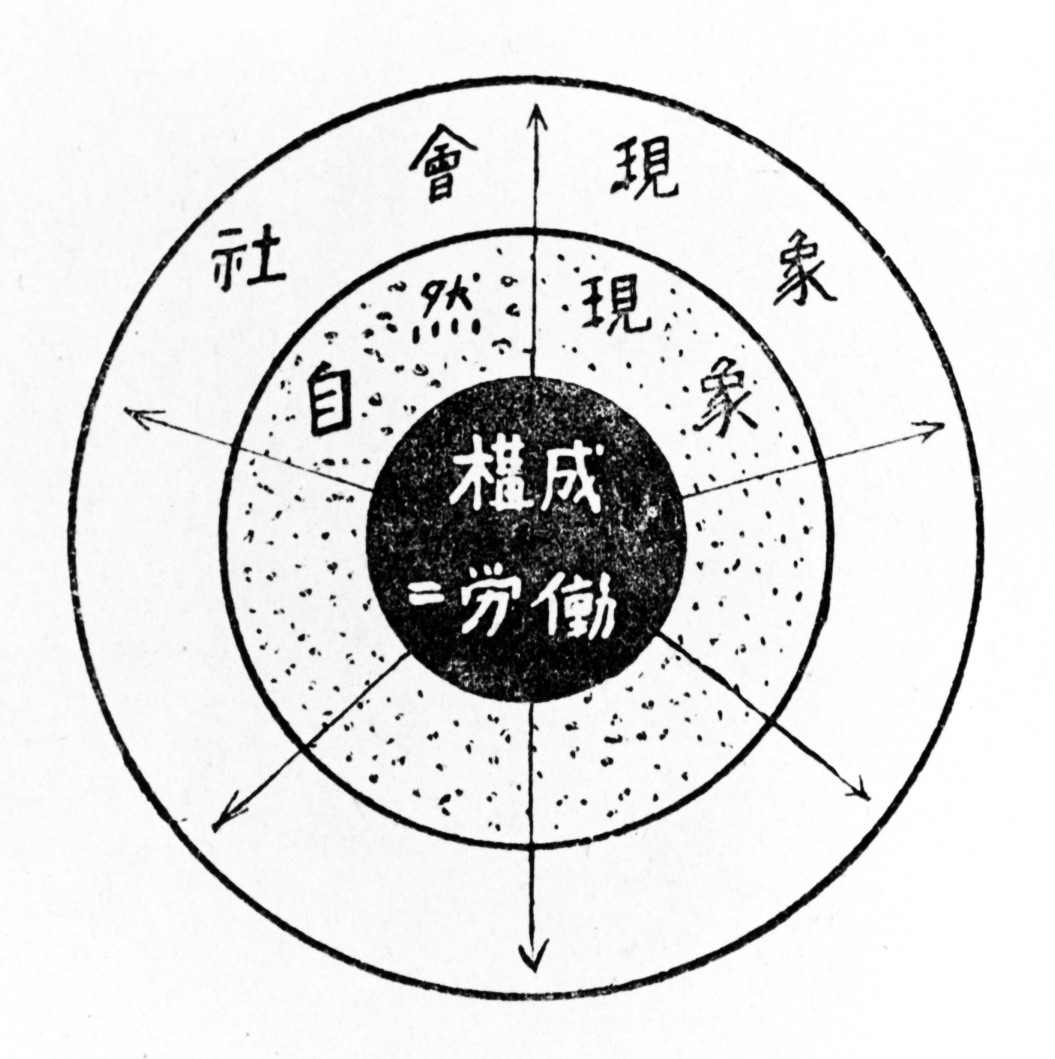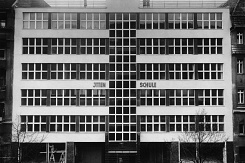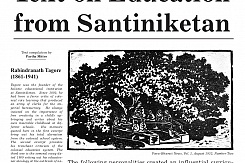Without undermining the sheer chutzpah of the exhibition, my own reading is that its cosmopolitanism has been somewhat overstated, even by myself, and that the discourse surrounding it is not adequately political in its critique. Arguably, the critique does not as yet exist, overwhelmed as it is by a somewhat triumphalist reading of India’s arrival on the international modern art scene. A more candid appraisal would be that the Bauhaus exhibition in Calcutta was a one-off, with the Bauhaus exerting no lasting influence on the Bengal School of Painting—quite unlike the sustained interaction that took place between the Bengal School and the Far Eastern tradition of painting and art pedagogy. This interaction was initiated by Okakura Tenshin in 1902 and sustained by Hishida Shunso, Yokoyama Taikan, Kampo Arai and other artists who contributed to the Bengal-Japan connection over the course of many decades.2 There is no such Bauhaus-Bengal legacy of shared affinities.
Second, it would be accurate to say that 1922 was a moment of transition for the Bauhaus as it was about to end the first phase of its activity. In this regard, one cannot emphasize enough the danger of singularizing or essentializing the Bauhaus as one consolidated institution, divested of internal tensions, debates and ruptures. Tellingly, Itten resigned shortly after the exhibition in Calcutta, while Gropius assertively changed the philosophical orientation of the school. To my mind, Gropius’ summary rejection of Itten’s spiritualism and trysts with Theosophy and Mazdaznan religion (neo-Zoroastrianism) in favor of a more robust interaction with technology and mass culture would not have been supported by Tagore. Indeed, Tagore’s advocacy of modernism without modernization is almost antithetical—politically, aesthetically, and philosophically—to the post-1922 agenda of the Bauhaus.
Finally, one would be compelled to ask: for all its cosmopolitanism, was the exhibition of the Bauhaus in Calcutta genuinely dialogical? Or did it merely juxtapose two sets of artworks from two cultural locations which, ostensibly, shared certain pedagogical values (although these pedagogies were radically different) and an abiding respect for craft production (despite the differences in the economic foundations of the crafts in Germany and India)? The point is that the shared affinities and differences between the Bauhaus and the Bengal School were never clearly articulated in the form of a manifesto, which could have provided a foundation for a more sustained intercultural art pedagogy between German and Bengali artists.
This point has been succinctly contextualized by the contemporary art historian Tapati Guha-Thakurta, who reminds us that for all the emergent hype surrounding the Bauhaus exhibition in Calcutta, it was a relatively small show put on for an elite constituency, with almost no impact on the public culture at large.3 Until very recently, little was known about the lesser known Bengali artists who participated in the show, and their presence has not as yet received much scrutiny from either Bengali or Western scholars. In fact, the exhibition’s full catalogue has only just been made available for scholarly scrutiny. As for its marketing success, just one art work from the exhibition was sold and the rest of the paintings were returned to Berlin in record time, countering the myth that these Bauhaus works circulated underground in Calcutta, contributing to the political unconscious of the Bengal art scene. Similarly, it is necessary to point out that after the exhibition in Calcutta, the Bauhaus never returned to its quasi-Orientalist “cult of India”: it became a forgotten chapter in Bauhaus history, as the school shifted its priorities, decisively and pragmatically, in favor of technology, design and media.
I have provided this brief background on the 1922 Bauhaus exhibition to stress that while it may have provided an oblique critique of Bengali provincialism, academicism and revivalism within Calcutta’s artistic community, it did nothing to critique or resist nationalism as such. At a broader level, I would question to what extent the larger phenomenon of the Bauhaus provides us with any agenda or set of strategies that could enable us to resist nationalism today. If anything, the Bauhaus teaches us how to survive nationalism through emigration and negotiation—if not complicity—with corporate capitalism, industry, and the privileged milieu of Ivy League universities. While we are all beneficiaries of its extraordinary legacy, let us be realistic and not impose any false assumption that the Bauhaus can help us to resist nationalism today.
To return to the question, how does one resist populist nationalism? Let us focus on 1916 when Tagore countered the rock-star reception that he received in Japan as Asia’s first Nobel Prize winner. With relentless honesty, he reminded his audiences that if they pursued “the self-idolatory of nation-worship” that they would only succeed in destroying themselves.4 Tagore saw nothing good in the idea of nationalism. He associated it with soul-denying mechanisms related to the apparatus of the nation-state, and viewed it as directly linked to racism and xenophobia. With great prescience he was able to see how nationalists mobilize technologies of surveillance for “the protection of state secrets”: I believe he anticipated much of what we fear about living with nationalism today.
Significantly, Tagore never softened his critique of nationalism. He did not, for instance, make a distinction between “good” nationalism and “bad” nationalism; nor did he differentiate between “civic” nationalism and “ethnic” nationalism. He was aware of these distinctions, but did not want to make them. Instead, he rejected the idea of nationalism outright.
This poses a challenge, if not a paradox: How does one reconcile Tagore’s anti-nationalism with the fact that he is our most beloved national poet in India and the composer of our national anthem?5 Indeed, he is also the composer of Bangladesh’s national anthem, and exerted some influence on the composition of Sri Lanka’s national anthem as well. With such patriotic credentials, how does one begin to make sense of his rejection of nationalism?
Reflexively, one could succumb to the false distinction between “nationalism” and “patriotism,” one exploited by many politicians—most recently Emmanuel Macron, who while sharing a platform with Donald Trump, made the tacit point that while he stood for patriotism, Trump was a die-hard nationalist. While perhaps there is a distinction to be made in this case, I would argue that patriotism ordinarily serves as a camouflage for nationalism; it is not a means of resisting it.
What is needed, in my view, is a distinct epistemology of the “national,” one whose genealogy can be traced to the subtle ways in which it was embodied by Tagore in his artistic practice: in the way he embraced the color of the soil and the change of seasons in his poems and songs; by his capacity to connect the metaphors of all-India bhakti (devotional) movements to a larger ethos of pluralism; and by his capacity to see embodied divinity in the gestures and movements of indigenous communities. While Tagore did not theorize any of these affinities in the larger context of a national imaginary, he has offered us many clues by which we can do so. To invent a distinct epistemology of the “national” on Tagorean lines, which is simultaneously “anti-national,” one must both prevent this epistemology from being subsumed within the discourse of nationalism while also dis-imbricating it from patriotism. There are, however, relatively few theoretical clues for formulating this particular epistemology.
The closest I have ever come to finding something useful beyond the postcolonial spiel around “imagined communities” is in the writings of Frantz Fanon—specifically, his essay “On National Culture,” which was first delivered in Rome as an address at the Second Congress of Black Writers and Artists in 1959. This address ended with the following statement: “National consciousness, which is not nationalism, is the only thing that will give us an international dimension … It is out of national consciousness that international consciousness lives and grows. And this two-fold emerging is ultimately the source of all culture.”6
This is a broad statement with many resonances. Even as we need to contextualize it within postwar anti-colonial struggles for liberation, I value the tenuous distinction Fanon makes between a “national consciousness” which is not yet “nationalism” but which could easily become so. I am fully aware of the risk involved in reclaiming the national. It is not merely a case of taking back what has been abandoned; it is more like walking through a minefield.
Speaking in a pragmatic register, Fanon claimed it is out of “national consciousness that international consciousness lives and grows.” I would read this statement as more or less consonant with Chantal Mouffe’s position that while she is sympathetic to the search for Left-wing micropolitical alternatives in global forums like the World Social Forum, she is skeptical that these arguably post-national, deterritorialized alternatives can be sustained within the mechanisms of the nation-state.7 I would agree. Far too many utopian dreams have failed to survive such mechanisms, which cannot simply be wished away.
As a strategy, I remain unconvinced by Mouffe’s pitch for Left populism, which she believes is the only way Right populism can be fought.8 I find both brands of populism equally suspect, as they can be simultaneously on the Right and the Left. In a more practical register, I am not sure that the art world possesses the necessary strategies or techniques to resist the sheer violence and scale of political populism on the Right. And, by “resist,” I mean political resistance, not a mere symbolic opposition to forces on the Right through internally codified artistic strategies or subversions. What I am arguing for is not another set of political representations, but the creation of new actions in the public sphere, where agency is shared between artists and public at large.
So, how does one begin to resist President Rodrigo Duterte’s brazen execution of an estimated 12,000 drug users and dealers, which has heightened his popularity among the working classes in the Philippines? We are dealing here with state-sanctioned, legitimized mass murder. How does one resist the overnight demonetization of the Indian economy masterminded by Narendra Modi, which was meant to unearth all the undisclosed “black money” in the country—ostensibly to help the poor? In effect, demonetization converted black money into white. While one can ridicule such consequences of authoritarian idiocy through any number of artistic and performative interventions, how does one resist their brazen violation of constitutional norms or due process? How does one find a language of resistance that goes beyond representation?
Against the lethal chimeras of populism, it is worth noting that “the popular” and the “national-popular” (Gramsci) are no longer taken seriously as strategies of resistance. And yet, when looking back at the Indian context, perhaps the only national cultural movement that India has ever experienced remains the Indian People’s Theatre Association (IPTA) of the 1940s. This movement, organized by the undivided Communist Party of India, brought together a wide spectrum of artists, musicians, dancers, painters and writers—not all of whom were necessarily on the Left. For a brief period, they succeeded in mobilizing resistance against imperialism and fascism.
Today, of course, it could be argued that the IPTA is a spent force and is invariably invoked nostalgically, which is never productive. Nonetheless, I think what its example teaches us is the necessity of organization. If artists today are serious about resisting nationalism, they cannot just fall back on their own creative resources and cutting-edge experiments. They need to organize a movement that works across isolated centers of art production. What are the new strategies of organization that could sustain such a movement? What are its mediating agencies? Can organization itself be regarded as the new avant-garde practice of our times?
Along with a new organizational strategy, I do believe that we need to introspect and undertake some much-needed self-critique in questioning the liberal values that underlie our faith in freedom, democracy and the right to dissent. While I, for one, am not ready to give up on any of these principles, how can one develop a more reflexive critique of liberalism, which, as writers like Talal Asad have pointed out, is not itself free of violence or social exclusion?9 How may we form new alliances with those constituencies of the marginalized—I am thinking in particular of Indigenous communities—whose worldviews and ecological wisdom were never part of the imaginary of the modern liberal nation-state? What might we learn from the socially excluded?
I will conclude by offering three possible lines of action: 1. The need to create a new epistemology of the national that actively resists nationalism; 2. The need for a new organizational strategy for sustaining art movements against nationalism that foreground action rather than representation; 3. The need to act on the social exclusions of liberalism by forging new alliances with the underprivileged. Some engagement with these three actions could enable us to find the ground necessary for resisting nationalism today.


_3.jpg?w=964)







